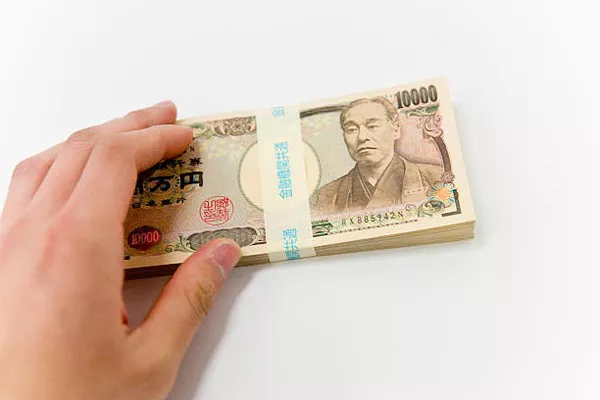In the realm of global currencies, few hold as much cultural and historical significance as the Japanese yen. Among its various denominations, the 1000 yen banknote stands out as a symbol of Japan’s rich heritage, blending artistic elegance with profound symbolism. In this comprehensive article, we delve into the intricate details of the 1000 yen banknote, examining its design elements, historical context, and enduring significance in Japanese society. Join us on a journey through the vibrant tapestry of Japanese culture as we explore the fascinating world of the 1000 yen banknote.
Design Elements of the 1000 Yen Banknote:
At first glance, the 1000 yen banknote captivates with its striking design, showcasing a harmonious blend of traditional and contemporary elements. The obverse side features a portrait of Noguchi Hideyo, a renowned bacteriologist whose contributions to medical science earned him international acclaim. His dignified visage serves as a tribute to Japan’s pioneering spirit and commitment to innovation in the field of healthcare.
Accompanying the portrait of Noguchi Hideyo is an intricate watermark depicting a phoenix, a mythical creature revered in Japanese folklore for its symbolism of resilience and rebirth. The inclusion of the phoenix reflects Japan’s enduring spirit in the face of adversity, serving as a poignant reminder of the nation’s ability to rise from the ashes and forge ahead towards a brighter future.
On the reverse side of the banknote, a mesmerizing scene unfolds, depicting the iconic Mount Fuji against a backdrop of cherry blossoms in full bloom. This breathtaking imagery pays homage to two of Japan’s most cherished symbols: the majestic Mount Fuji, revered as a sacred symbol of national identity, and the delicate cherry blossom, celebrated for its ephemeral beauty and profound cultural significance.
In addition to its artistic motifs, the 1000 yen banknote incorporates advanced security features to deter counterfeiting and ensure the integrity of Japan’s currency. These include intricate patterns, holographic elements, and ultraviolet ink, all meticulously designed to safeguard the authenticity of the banknote and maintain public trust in the financial system.
Historical Context and Evolution:
The journey of the 1000 yen banknote traces back to the early 20th century when Japan underwent a period of rapid modernization and economic development. In 1871, the Meiji government established the yen as the official currency, marking a pivotal milestone in Japan’s transition towards a modern monetary system. Initially, banknotes were issued in denominations of 1, 5, 10, and 100 yen, reflecting the prevailing economic conditions and the need for a stable medium of exchange.
Over time, as Japan’s economy flourished and international trade expanded, the demand for higher denomination banknotes grew, prompting the introduction of the 1000 yen banknote in 1945. Designed to facilitate larger transactions and accommodate the evolving needs of businesses and consumers, the 1000 yen banknote quickly gained popularity and became an integral part of Japan’s monetary landscape.
Since its inception, the design of the 1000 yen banknote has undergone several revisions to incorporate new security features, update imagery, and reflect shifting cultural values. Despite these changes, however, the underlying symbolism and significance of the banknote have remained constant, serving as a tangible representation of Japan’s cultural heritage and economic prowess.
Cultural Significance and Symbolism:
Beyond its monetary value, the 1000 yen banknote holds profound cultural significance in Japanese society, reflecting the nation’s values, traditions, and collective identity. The portrait of Noguchi Hideyo serves as a tribute to Japan’s scientific achievements and the enduring legacy of its pioneering researchers, inspiring future generations to pursue excellence in their respective fields.
The depiction of Mount Fuji and cherry blossoms on the reverse side of the banknote evokes a sense of nostalgia and reverence for Japan’s natural beauty, fostering a deep connection to the land and its cultural heritage. For centuries, Mount Fuji has been revered as a sacred symbol of strength and resilience, while cherry blossoms symbolize the transient nature of life and the fleeting beauty of existence.
In Japanese culture, the act of exchanging money is imbued with ritualistic significance, symbolizing trust, respect, and gratitude. Whether used for everyday transactions or special occasions, the 1000 yen banknote serves as a tangible expression of goodwill and appreciation, strengthening social bonds and fostering a sense of community among individuals.
See Also: The Denominations of Japanese Yen
Conclusion:
In conclusion, the 1000 yen banknote stands as a testament to Japan’s rich cultural heritage, blending artistic elegance with profound symbolism to create a tangible expression of the nation’s values and traditions. From its intricate design elements to its historical significance and cultural symbolism, the 1000 yen banknote serves as a window into Japan’s past, present, and future, inviting us to explore the vibrant tapestry of Japanese culture and society. As we reflect on the enduring legacy of this iconic currency, let us celebrate its role in shaping Japan’s identity and preserving its cultural heritage for generations to come.


